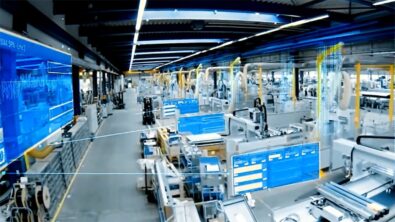Insights into successful chip development and lifecycle strategies for Semiconductors
All semiconductor businesses, including; fabs, fabless, IDMs, foundries, and OSATs or subcons, can use the latest end-to-end product lifecycle management software solutions to improve their time to market (TTM).
Is it possible to achieve this with reduced waste and much lower costs? New, independent research suggests that it is.
A new age of IC development has led to increased growth
There’s no doubt that there are endless opportunities in today’s market for Semi. From smart connected devices to autonomous vehicles to 5G communications. But challenges are standing in the way of realizing those opportunities. It’s also worth noting that the digitalization path doesn’t always lead to a pot of gold. But all of this has led to an unprecedented level of complexity and disruption to the industry overall! The question is where do we start, what areas can we focus on quickly realizing a fast return on investment?
Semiconductor companies are already doing more with less
In this fast-paced, global marketplace, companies must keep their product costs down and get their products to market faster to be competitive. As a result, semiconductor companies face constant challenges to reduce engineering and development resources. And, at the same time, improve productivity and quality. And we know for a fact that every company across the board is doing more with less. Their engineering teams are global because of acquisitions and or a diverse supply chain. Like many other hi-tech industries, while trying to remain competitive, semiconductor companies face many internal challenges. Their design review processes require you to work with data from multiple systems. Global design teams still communicate and share information via file transfer protocol (FTP) sites. And, engineers spend too much time looking for or re-creating information. As a result, design changes are not synchronized and engineering change order (ECO) processes take too long and cost too much.
Faster time to revenue by reducing NPI cycle time
The need to adapt and change is becoming more evident as we see how fast this industry is evolving. And while semiconductor design and manufacturing are part of the same supply chain, they have traditionally been two distinct silos with limited collaboration and overlap. For companies to take advantage of quickly changing business needs, design and manufacturing must be on the same page. And, quick action is needed now to take advantage of the new opportunities it brings.
Today, real collaboration is critical for companies to manage their new product introduction (NPI) for a faster ramp to volume. But the lack of flexible and agile systems and real collaboration will continue to hold them back. The results are an inefficient use of resources and frequently missing critical deadlines. It also leads to quality and supplier issues, delays, and in the end, reduced time to revenue. This means a digitalization strategy is essential today because time-to-market (TTM) windows are now less than a year.
By enabling cross-functional collaboration and having an integrated NPI process across the entire business, they gain the visibility needed to know that they can manufacture what they design. They will have the capability to manage their NPI product and project deliverables seamlessly and ramp to volume quickly. With the addition of project and program management solutions that connect planning to the actual execution of tasks. Timelines are automatically updated, deliverables are linked and tracked, and project status is clearly understood.
Efficient and secure reuse of intellectual property (IP)
Semiconductor companies use many tools and processes across their entire value chain. But, with so many systems it’s hard to keep track of what information goes where. All stakeholders must be able to collaborate, visualize, and validate data across the entire business. They must also be able to find design data quickly to maximize reuse. It is especially critical in providing a known good starting point for each design to move forward quickly. It offers the ability to reuse intellectual property (IP) across families of products. To do this, companies must establish automated, efficient, structured workflows and change processes. And at the same time, ensure changes accurately reflect across functional areas and data representations. Therefore, it’s critical to manage data in a single secure source, regardless of where or how it’s generated.
Measuring semiconductor digitalization maturity level
We know that most companies start their digitalization journeys in different places and evolve them over time. Although there are many best-in-class solutions and tools to choose from, no one solution can do it all. Leaders in the industry see the value in having an enterprise-wide view and not just optimized point solutions.
When talking about a company’s digitalization maturity level, it’s important to know what it means to be digitally mature. If the tools you choose don’t work well together in a flexible open ecosystem, your pursuit will fall well short of your goal.
Watch the webinar
How do leading Semi companies manage the complex and short lifecycles of their products?
To answer this question and shed more light on this topic. Siemens invites you to join our webinar “Semiconductor Innovation for Profitability.” With guest speaker Julie Fraser, Vice President of Research for Operations and Manufacturing for Tech-Clarity. Julie Fraser’s work focuses on Industry 4.0 and Smart Manufacturing’s business value and heads up MESA’s Smart Manufacturing Community Groups. An essential voice in the industry, she is the ideal candidate to take you through the study’s findings and provide an insight into how changing mindsets and ways of working can lead to tremendous success.
As a thank you for attending the webinar, we’ll send you a copy of the soon to be released report summarizing the findings.


